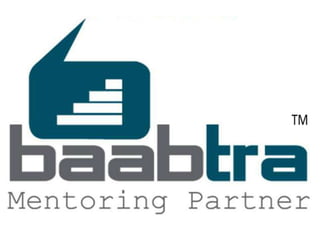
Algorithms&flowcharts
- 2. ALGORITHMS & FLOWCHARTS Ashwin Anand V
- 3. Algorithm An Algorithm is just a detailed sequence of simple steps that are needed to solve a problem Flowchart A Flowchart is the graphical representation of an Algorithm.
- 4. Steps to create an algorithm • First produce a general algorithm • Refine the algorithm successively to get step by step detailed algorithm that is very close to a computer language. • Pseudo code is an artificial and informal language that helps programmers develop algorithms. Pseudo code is very similar to everyday English.
- 5. Example Write an algorithm to determine a student’s final grade and indicate whether it is passing or failing. The final grade is calculated as the average of four marks. Pseudo code: • Input a set of 4 marks • Calculate their average by summing and dividing by 4 • if average is below 50 Print “FAIL” else Print “PASS”
- 6. Detailed Algorithm Step 1: Input M1,M2,M3,M4 Step 2: GRADE (M1+M2+M3+M4)/4 Step 3: if (GRADE < 50) then Print “FAIL” else Print “PASS” end
- 7. Flowchart Symbols Basic Name Symbol Use in Flowchart Oval Denotes the beginning or end of the program Parallelogram Denotes an input operation Rectangle Denotes a process to be carried out e.g. addition, subtraction, division etc. Diamond Denotes a decision (or branch) to be made. The program should continue along one of two routes. (e.g. IF/THEN/ELSE) Hybrid Denotes an output operation Flow line Denotes the direction of logic flow in the program
- 8. Example START Step 1: Input Input M1,M2,M3,M4 M1,M2,M3,M4 Step 2: GRADE (M1+M2+M3+M4)/4 GRADE (M1+M2+M3+M4)/4 Step 3: if (GRADE <50) then Print “FAIL” N Y IS GRADE<50 else Print “PASS” PRINT PRINT end “PASS” “FAIL” STOP
- 9. Example • Write an algorithm that reads two values, determines the largest value and prints the largest value with an identifying message. ALGORITHM Step 1: Input A,B Step 2: if (A> B) then MAX A else MAX B end Step 3: Print “The largest value is”, MAX
- 10. • The expression A>B is a logical expression • it describes a condition we want to test • if A>B is true (if A is greater than B) we take the action on left • print the value of A • if A>B is false (if A is not greater than B) we take the action on right • print the value of B
- 11. START Input A,B Y is N A>B MAX A MAX B Print “The largest value is”, MAX STOP
- 12. Thank you
- 13. Disclaimer: This presentation is prepared by trainees of baabtra as a part of mentoring program. This is not official document of baabtra – Mentoring Partner baabtra – Mentoring Partner is the mentoring division of baabte System Technologies Pvt. Ltd.
- 14. Contact Us
